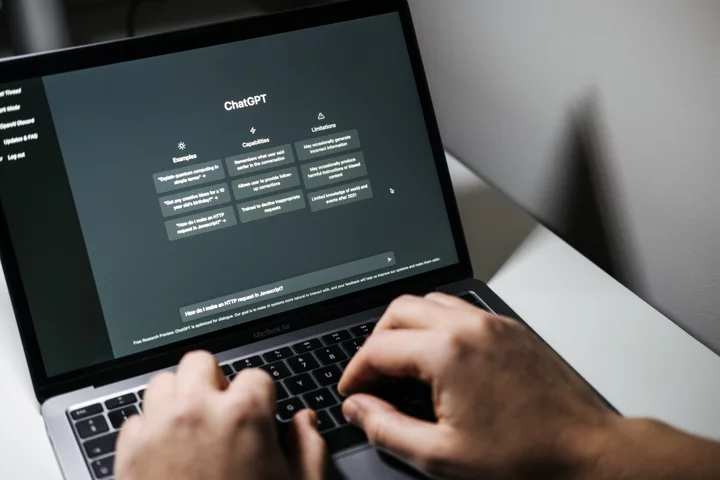
Australia Reveals $1.3 Billion Expansion in Critical Mineral Financing
Australia will announce a A$2 billion ($1.3 billion) expansion in critical minerals financing Tuesday as part of its
2023-10-24 21:45

Antenna Group Expands Global Footprint, Launching UK Operations
NEW YORK & LONDON--(BUSINESS WIRE)--Jun 27, 2023--
2023-06-27 16:25

The Best 75-Inch (and up) TVs for 2023
When it comes to TVs these days, 65 inches isn't considered nearly as large as
2023-09-12 03:50

American VCs Fought Back Strict Biden Rules on China Investments. But More May Be Coming
US investors who spent years fighting strict limits on their ability to invest in China scored a victory
2023-08-10 09:24

Did IShowSpeed meet Neymar? Streamer's hilarious encounter with PSG superstar goes viral, fans say 'Messi next'
During match in Osaka, Japan, popular YouTuber IShowSpeed aka Darren Watkins meets PSG superstar Neymar and they also collaborate on a TikTok video
2023-07-26 17:49

CORRECTING and REPLACING Clarify Health Launches Generative Artificial Intelligence, Clara
SAN FRANCISCO--(BUSINESS WIRE)--Jun 6, 2023--
2023-06-07 09:28

Despite Protections, Rhinos Are Being Hunted for Their Horns: Big Take Podcast
Listen to The Big Take podcast on iHeart, Apple Podcasts, Spotify, Terminal. For years, park rangers in South
2023-07-24 17:58

Microsoft, Activision ask judge for speedy schedule in FTC challenge
WASHINGTON Microsoft and Activision Blizzard asked a U.S. judge on Wednesday to quickly schedule a case management conference
2023-06-15 03:16

Reddit suffers partial outage as blackout protest continues
UPDATE: Jun. 15, 2023, 2:20 p.m. EDT Reddit appeared to suffer a partial outage on
2023-06-16 02:51

OpenAI expands ChatGPT 'custom instructions' to free users
OpenAI's custom instructions feature that rolled out to ChatGPT Plus subscribers in July, is now
2023-08-11 17:48

Diablo 4 Nightmare Dungeon Tier Lists June 2023: Solo, Group, Glyph Farming, Pushing
Diablo 4 Nightmare Dungeon Tier List for June 2023 including best dungeons to run for Solo Experience Farming, Glyph Leveling, Group Farming and High Tier Pushing.
2023-06-21 02:00

WhatsApp could be getting ads
WhatsApp might be getting ads, according to its boss. The company has categorically ruled out that it would be put advertising in the inbox. But it might come elsewhere in the app, such as WhatsApp’s “Status” feature, which works like Instagram stories. WhatsApp has long resisted introducing ads to any part of its platform. That sets it apart from other Meta platforms, such as Instagram and Facebook, which heavily integrate advertising. WhatsApp has long been rumoured to be considering putting ads into its app, with rumours stretching back as long as five years ago. But it has largely resisted the temptation, in part because of worries about whether it would concern privacy-conscious users, whom WhatsApp has particularly targeted. In September, the Financial Times reported that it was looking at changing that. The company was evaluating whether it would work to show ads in the conversation list, the paper reported. Meta outright denied that it had been testing or working on that feature, or that it planned to. “We aren’t doing this,” WhatsApp head Will Cathcart said on Twitter. But in an interview with Brazilian newspaper Folha De S.Paulo, Mr Cathcart was asked whether the app would continue to be free and not show ads. And he said that some ads might come to other parts of the platform. The app will not put ads within the “messaging experience”, such as the inbox or chats themselves. Instead, it could come in other parts of the app, such as the Status feature as well as the new Channels tool that allows people to subscribe to messages from creators. The company could also introduce the option to charge people to subscribe to those channels, he said. That could also be advertised within those Channels. He did not give any firm information about when the feature would arrive, or any commitment that it would actually be introduced. Read More Political ads on Instagram and Facebook can be deepfakes, Meta says Instagram working to let people make AI ‘friends’ to talk to Big tech poses ‘existential threat’ to UK journalism, survey of editors finds
2023-11-10 02:46
You Might Like...

Australian bourse operator partners with TCS for trading software replacement

What to know about Ron DeSantis, the Florida governor running for president

Amazon Loses Key Backer Four Years Into Plan to Eliminate Carbon Emissions

IBM nears $5 billion deal for software provider Apptio - WSJ

Uber launches UK flight ticket bookings - FT

Fluke Advanced Wire Tracers Locate Wiring Problems Without Time-Consuming Guesswork

New York City bans TikTok on government-owned devices over security concerns

COD 2023 Terminal and Scrapyard Leaked
